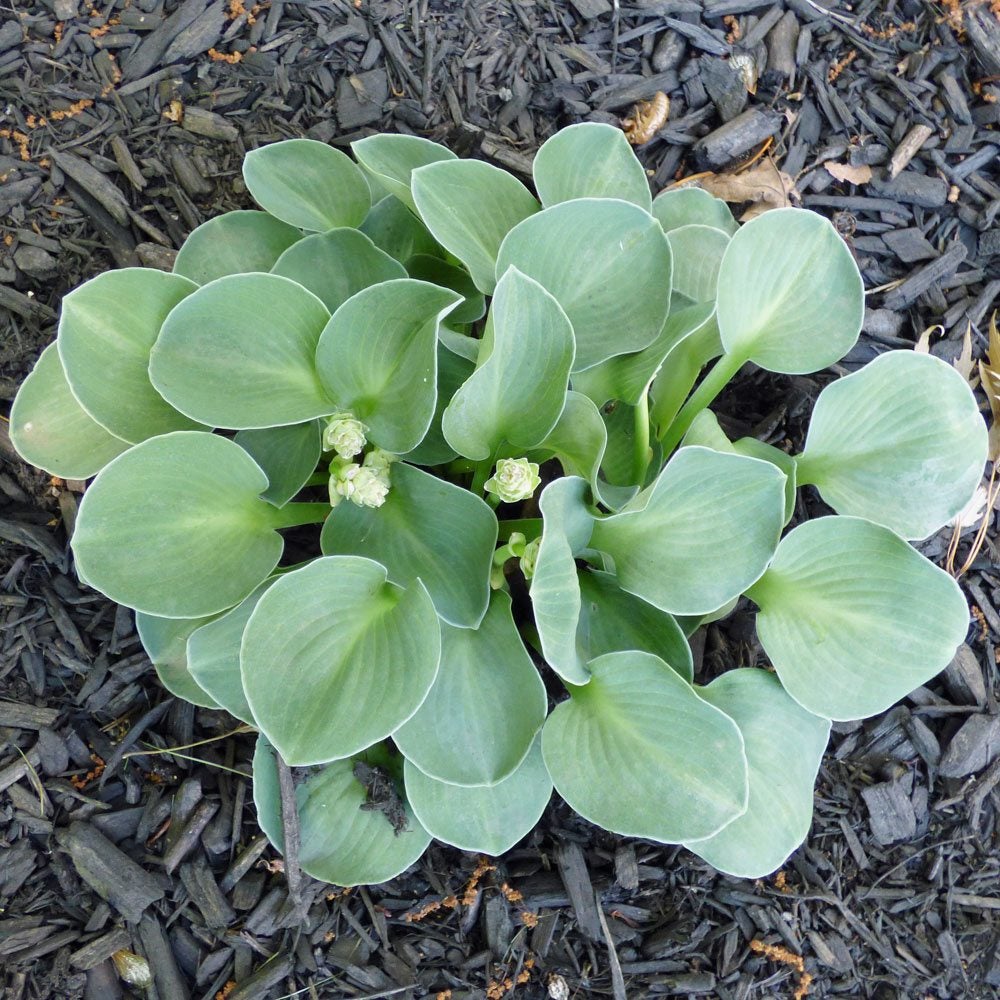What Is A Mouse-Ear Hosta – How To Grow Mouse-Ear Hosta Plants


Hostas are popular with many gardeners because they are easy to grow and maintain. They are perennials, coming back year after year, and they tolerate shade. Hostas tend to grow large, but if your space is limited, growing the adorable mouse-ear hosta may be for you. If you want to know how to grow mouse-ear hosta, here’s what you need to know.
What is a Mouse-Ear Hosta?
Miniature hostas are just what they sound like: miniature versions of the hosta plants you know and love. Blue mouse-ear hosta is one variety of this cute little perennial that is easy to grow and care for in a variety of settings.
At a maximum, these little plants grow to a height of 8 inches (20 cm.) and a spread of 12 inches (31 cm.). The leaves are thick, blue-green, rubbery, and curl inward a little bit, like a mouse’s ear.
Mouse-Ear Hosta Information and Care
The blue mouse-ear hosta grows into a compact little mound with near-perfect symmetry, so it is a beautiful addition to gardens, especially small spaces. It will produce showy, pale purple, bell-shaped flowers on stalks in midsummer.
Mouse-ear hosta care is as easy as the care of regular-sized hostas. They prefer part to full shade and soil that drains well. Unlike the larger varieties, these little hostas don’t tolerate heavy or clay soil very well. If you plan to place your mouse-ear hosta in the ground, you can amend the soil by mixing in pea gravel. Mulch is also important for miniature hosta plants. Since they are small, even a mild rain can splash up dirt and mud and leave the foliage looking messy.
Growing mouse-ear hosta is versatile as well as easy. These more compact plants are great for containers, but they can also be placed anywhere in the garden that a normal-sized hosta would go. Due to the small size and compact arrangement of foliage, mouse-ear hosta also makes a great groundcover for those shady areas where grass doesn’t grow well.
They look nice in rock gardens and around water features. The possibilities for mouse-ear hosta are nearly endless, and they make great additions to nearly every type of garden.
Gardening tips, videos, info and more delivered right to your inbox!
Sign up for the Gardening Know How newsletter today and receive a free copy of our e-book "How to Grow Delicious Tomatoes".

Mary Ellen Ellis has been gardening for over 20 years. With degrees in Chemistry and Biology, Mary Ellen's specialties are flowers, native plants, and herbs.
-
 Looking For Plants To Give You The Soft And Fuzzies? Try These 5 Fuzzy Leaf Plant Options
Looking For Plants To Give You The Soft And Fuzzies? Try These 5 Fuzzy Leaf Plant OptionsLovers of texture, drama, silver foliage and tactile plants will adore these special sensory garden additions. These fuzzy leaf plant options will leave you all aglow
By Susan Albert
-
 Get Ready For A Summer Of Hummers! Grow These Full Sun Hummingbird Plants and Flowers
Get Ready For A Summer Of Hummers! Grow These Full Sun Hummingbird Plants and FlowersIf you’re lucky enough to enjoy a sunny backyard, make sure you are maxing out on your pollinator opportunities and grow these full sun hummingbird plants and flowers
By Tonya Barnett